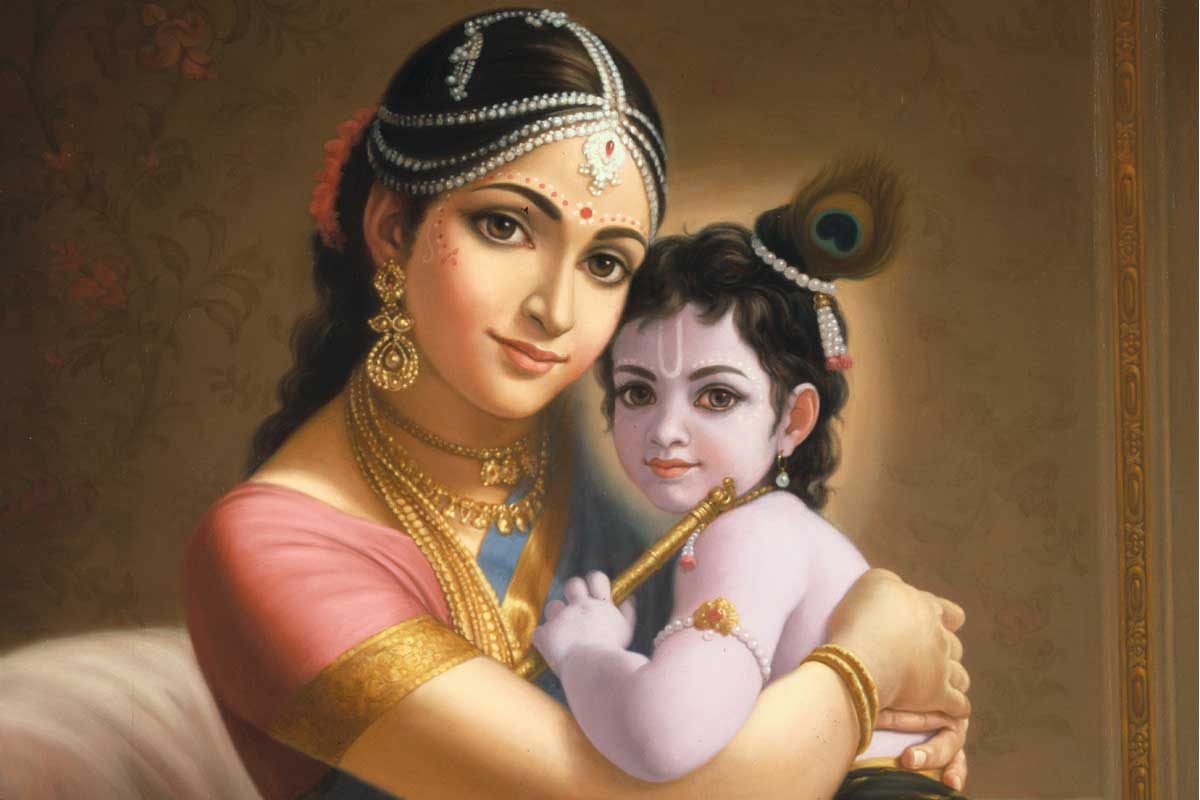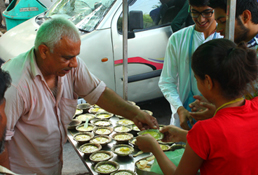Streets are lighting up. Ramlilas are staging. Durga Puja Pandals are being put up. The bedlam in the markets is becoming noisier. It is that peppy time of the year. The entire nation gleams with joy, and so do the nationals. For some, it is Diwali Season andfor some, it is Navratras. For others, it is Dhanteras, Govardhan Puja or Bhaiya Dooj. While for the Devotees, there is a deeper celebration unfolding in their hearts.It is thereflective month of Kartik, an opportunity for diving deeper into one’s relationshipwith God.
So what are these devotees doing? Meditate on a boy who is crying on being punished by His mother (Yes, capital “H”). What could be more bizarre? Theosophy is mysterious. For it is the search for the source of all mysteriousness. The greatest of thinkers have been labouring for centuries encapsulate God into their definitions. Let’s see whose God is most Godly.
A great chunk of the world today, frankly, has not much to do with God. Then there are more fortunate traditions which say that well, God does exist, but cannot control the world. He is under a cosmic power struggle with dark forces. But isn’t God also the source of the evil powers? Or say, if both of these were to be “Gods”, you still haven’t reached the “One” source of all that be. Polytheism was never a serious philosophy.
Vedas mention that the Absolute Truth is asamordhava, “One who has neither any equal, nor any greater.”This takes us a rung higher. God is both the creator and the controller. He is the perfect provider of all living entities. Not a leaf nudges without His supreme will. A God who is worshipped by His devotees for His great opulence, prowess and intelligence. God is the eternal loving father, and the living entities His dear subjects.
But could there be a still higher conception? Would God be God enough if can choose to be not God? Does absolute completeness not include incompleteness also? Could God act like a person, feel like a person?
This summit of theosophy is Shri Krishna in Vrindavan.Where love reigns prowess. It is where devotees have worshipped and realized God, not in His ordinary aspect as the Creator and Controller of the universe, or as the mere bestower of boons or dispenser of justice, but in His highest aspect of Love and Sweetness. It is where God is free to not exhibit His Godliness. It is His home.
It entails an aspect of Himself, in which He seeks us, as much as we seek Him, loves us as much as we love Him, and needs us as much as we need Him. An aspect, in which He is more natural than supernatural, more human than super-human, in which he has all the failings and weaknesses of the humans, but in which paradoxical as it may seem, failings becomes His embellishments. They add to His sweetness and perfection, instead of detracting from it, because they stem not from any weakness inherent in Him, but from His love for those who love Him.
Could He be so sweet if He did not have these weaknesses, if inspite of the fact that He is the Master of the universe, He was not greedy for the milk and butter of the milkmaids of Vrindavan, if to satisfy His greed He did not steal or plunder, and if He did not lie for fear of being chastised by mother Yasoda?”
This crowning conception of Godhead is what the devotees meditate on this Kartik. Trying to reach, if not much, two-inches closer to developing that purest love which can conquer the insurmountable Absolute Truth.
How to do it?
1. Singing Damodarastakam
Devotees sing and meditate on the descriptions of Damodar Lila, where Krishna was bound the Love of Mother Yashoda
2. Offering Lamps to Yashoda-Damodar
We remember and worship the phenomenally sweet sight of the Absolute Truth shaking in fear from His mother
3. More Chanting of Hare Krishna Mahamantra
The central practice of Spiritual Life which spearheads the cleansing of the practitioner’s heart and reviving one’s relationship with Krishna
4. More Reading
Philosophy strengthens the mind. Reading calibrates a practitioner’s conception for all the activities he performs for spiritual development
5. Visiting Dham/Temples
Visiting the Dham gives a boost to the above practices. Relishing the rich association of devotees and the spiritually surcharged atmosphere is the best thing one could do for their Spiritual Life.

A struggling practitioner of Bhakti gains life from this month. He gets Inspiration. Hope. Strength. The determination, to tightly embrace what is favourable for his journey, and to let go of what isn’t. He gets impetus to revive a relationship with that Eternal Friend. A friend not eclipsed by doubt, by distance, by reverence, or by the smell of trade. And as important as it may be, He gets the impetus to revive his own self. A self that is not tainted by achievements, by designations,by lust, or by greed. A self which just wants to Serve with Love, a God who just wants my Love.Wish you a happy Kartik!
About the Author : Caitanya Jivana Das is a monk at ISKCON Punjabi Bagh, educationally B. Com (H) from Hansraj College, C.A. and C.P.A. (USA).





